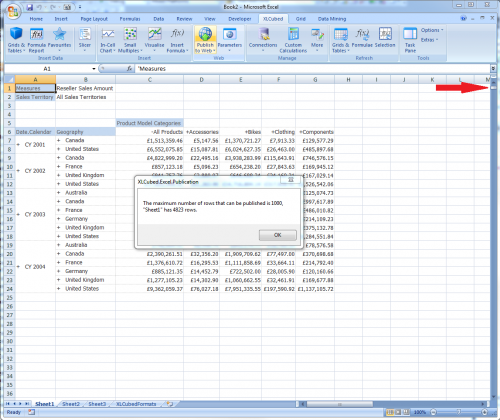Difference between revisions of "Publishing more than 1000 rows"
| Line 1: | Line 1: | ||
If you try to publish a workbook with a large number of rows or columns you may get a message telling you that a sheet has too many rows or column. | If you try to publish a workbook with a large number of rows or columns you may get a message telling you that a sheet has too many rows or column. | ||
| − | [[Image:Publish100Rows.png| | + | [[Image:Publish100Rows.png|500px|center]] |
Note the small scroll bar indicating that there are a lot of rows in use. | Note the small scroll bar indicating that there are a lot of rows in use. | ||
Revision as of 14:21, 27 September 2013
If you try to publish a workbook with a large number of rows or columns you may get a message telling you that a sheet has too many rows or column.
Note the small scroll bar indicating that there are a lot of rows in use.
While XLCubed Web can handle a large number of rows, browsers will hang if given very large tables to display. To avoid giving web users a poor experience XLCubed will warn you when you try to publish a sheet which is very large.
From here you have several options:
- If the sheet is used for calculation, and does not need to be shown to the user then it can be hidden. As it the sheet can not be shown in a browser the publication limit will not apply.
- If you are displaying a large Grid or Tables, consider using a Tables#Paging.
- If you really need to show such a large number of rows, the limits can be adjusted in the XLCubed options screen.
- If you don't think you are using 1000 rows you can follow the instructions below.
